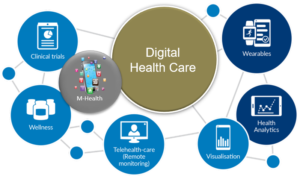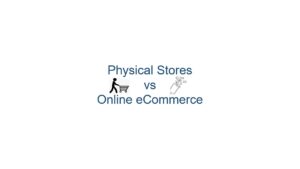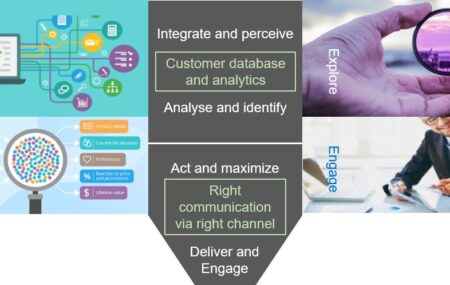Telehealth is gaining popularity
When the COVID-19 pandemic started, both physicians and patients embraced telehealth. In April 2020, the number of virtual visits increased by 78 times over the previous two months, accounting for nearly one-third of all outpatient visits. In May 2021, 88% of consumers reported using telehealth services at some point since the COVID-19 pandemic began. Physicians were also significantly more at ease with virtual care. In 2021, 83% of those polled in the McKinsey Physician Survey offered virtual services, compared to only 13% in 2019. The growth (and valuations) of virtual-first care providers indicate that patient demand is consistent and growing.

Utilizing Telehealth
Virtual health care, also known as telemedicine or telehealth, is much more than a low-cost digital substitute for in-person care. When done correctly, telehealth can improve patient health, reduce costs, and make it easier for those who live in areas with a scarcity of health providers to access care. Telemedicine, through digital platforms, can connect patients to the best doctors, even if they practice hundreds of miles away. Virtual healthcare can also help to avoid unnecessary ER visits. According to one 2019 study, ER services for non-emergency, treatable conditions can cost up to 12 times more than visiting a doctor’s office, a $32 billion difference each year.

Concerns about digital health are divided
Since July 2020, physician confidence in the effectiveness of telehealth has declined. By mid-2021, consumers’ acceptance of telehealth had waned from its early COVID-19 peak: utilization was down to 38 times pre-COVID-19 levels. In 2021, more physicians were offering telehealth but recommending in-person care when possible, suggesting that physicians are shifting away from URL and preferring a return to IRL (in real life) care delivery. Even when telehealth is available, more doctors are recommending in-person care to their patients when possible. This could imply that physicians are reconsidering virtual care.

Latest trends in telehealth
According to a March 2021 McKinsey Consumer Survey, those under the age of 55, in higher income brackets, and with individual or employer-sponsored group insurance are more likely to use telehealth. Virtual care is also in higher demand in mental and behavioural health than in other specialties, with 62 percent of mental-health patients completing their most recent visit virtually versus 20 percent of primary-care patients. As the pandemic progresses, consumers continue to prefer the convenience of digital engagement and virtual-care options. This preference may allow more patients to access care while also assisting providers to grow.

The number of virtual-first players continues to grow, and physicians are struggling to keep up. The patient–physician relationship is also changing. According to McKinsey’s April 2021 Physician Survey, 58 percent of respondents have lost patients to other physicians or health systems since the start of the COVID-19 pandemic. According to surveys, doctors and patients have very different perspectives on telehealth and other forms of digital engagement. Most importantly, virtual care has the potential to significantly improve patient outcomes by delivering timely care to those who would otherwise delay it or who live in areas with shortage in service providers. In the long run, the strategic, purposeful design of a hybrid IRL/URL healthcare delivery model will benefit both patients and service providers.
For marketing, financial, and other business-related services, please visit our website http://businessplandesk.com.
#telehealth #telehealthcare #business #marketing #professionalservices #ecommerce #consultingservices #consulting #businessconsulting #businessconsultant
Read More![Telehealth Telehealth is gaining popularity When the COVID-19 pandemic started, both physicians and patients embraced telehealth. In April 2020, the number of virtual visits increased by 78 times over the previous two months, accounting for nearly one-third of all outpatient visits. In May 2021, 88% of consumers reported using telehealth services at some point since the […]](http://businessplandesk.com/wp-content/uploads/2022/07/Article21_Telehealth_PIcture-1-450x285.png)
![Amazon’s brick-and-mortar clothing store Amazon Style, Amazon’s brick-and-mortar clothing store, has been opened in the Los Angeles area at The Americana at Brand mall. It joins Whole Foods, Amazon Go, and Amazon Fresh as new physical locations for Amazon. Amazon Style will sell clothing from Levi’s, Tommy Hilfiger, Champion, and other brands. Amazon Style is outfitted with technology that […]](http://businessplandesk.com/wp-content/uploads/2022/06/Picture_Article20_Brick-and-Mortal_for-website-450x285.jpg)

![Brick-And-Mortar retailing The pandemic has had an impact on brick-and-mortar retail, but its difficulties have been exacerbated by known competition from e-commerce sales. However, recent data reveals that brick-and-mortar retail is demonstrating an extraordinary level of resistance to this threat. Despite the challenges that brick-and-mortar stores face, people still prefer to shop there. Although eCommerce is growing, […]](http://businessplandesk.com/wp-content/uploads/2022/06/Picture1_Article20_Brick-and-Mortar-450x285.jpg)





 Healthcare marketing helps people understand their health and find ways to improve it. Marketing health products and services presents unique challenges compared to other
Healthcare marketing helps people understand their health and find ways to improve it. Marketing health products and services presents unique challenges compared to other 

![How Covid-19 Impacts Digital Marketing in the United States The COVID-19 pandemic has hugely driven the people, organizations, and governments towards digitalization and digital platforms. We are all struggling to address the causes of disruptions in life, society, and business. Though pandemic is a disaster for many people, the positive impact of Covid-19 on digital transformation can very well be seen globally. In US, […]](http://businessplandesk.com/wp-content/uploads/2021/06/Image-for-Covid-19-article-450x285.jpg)